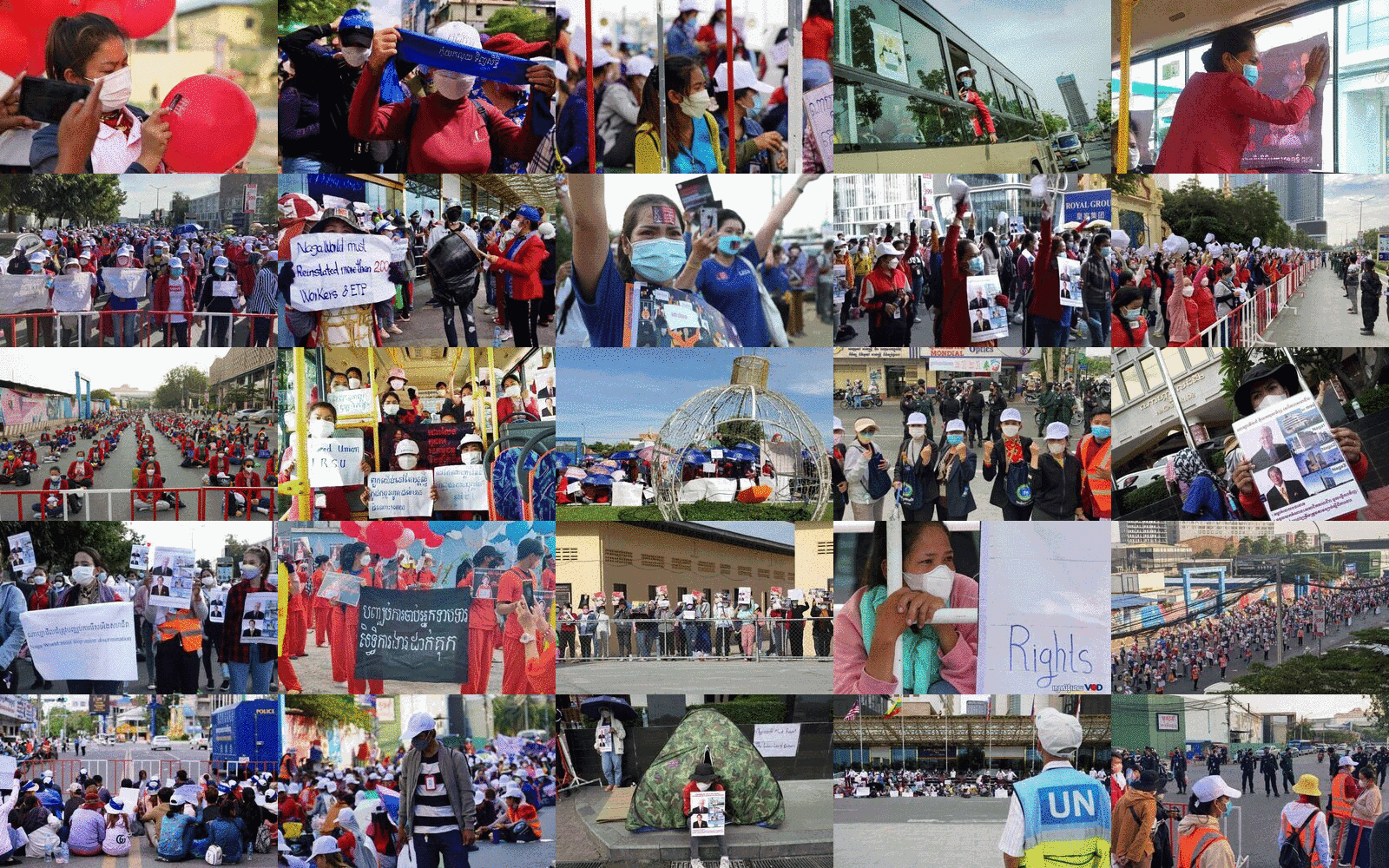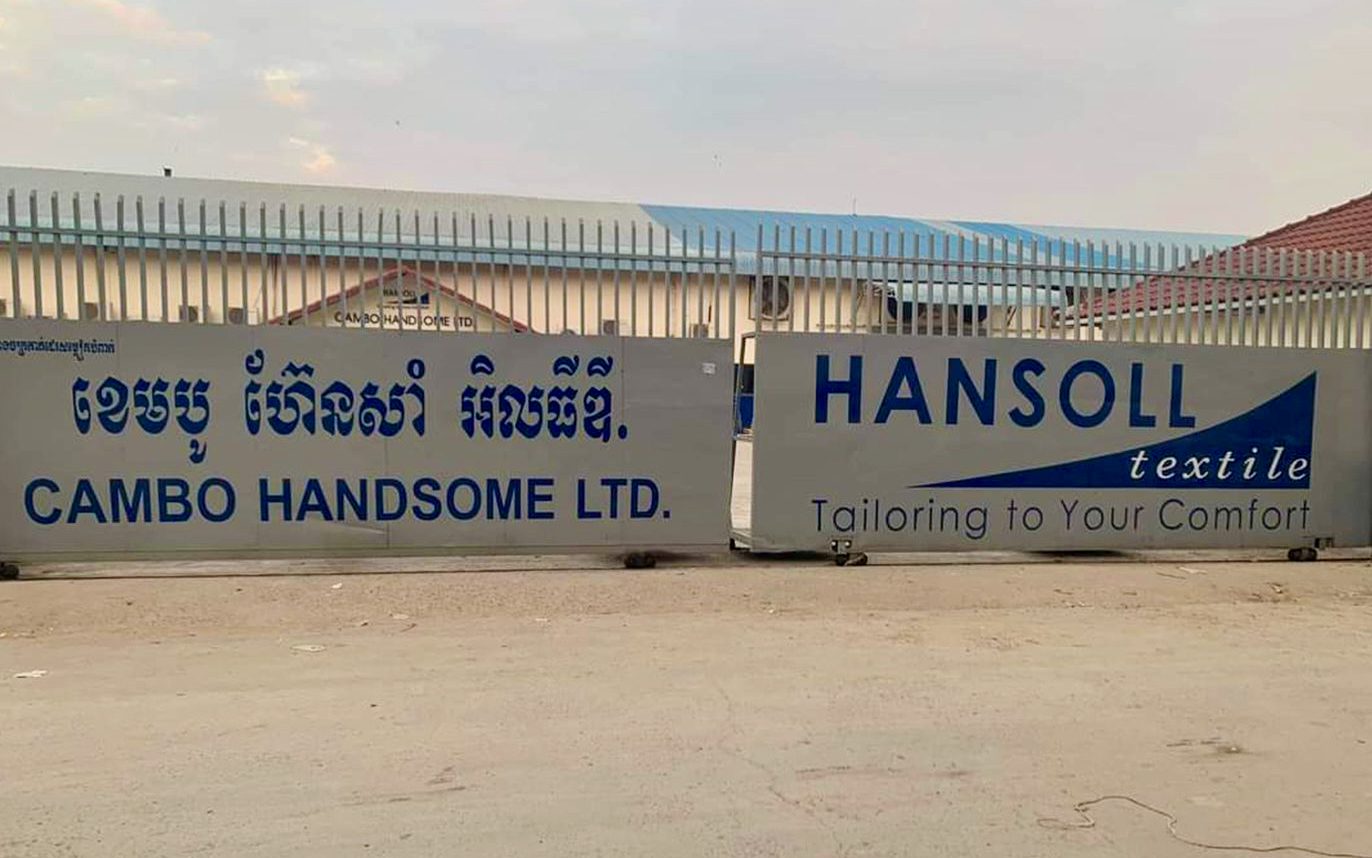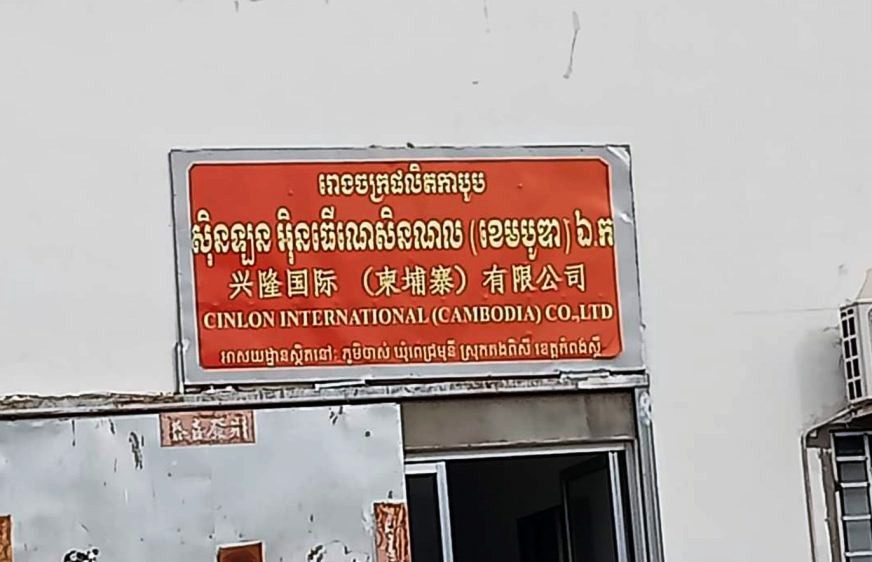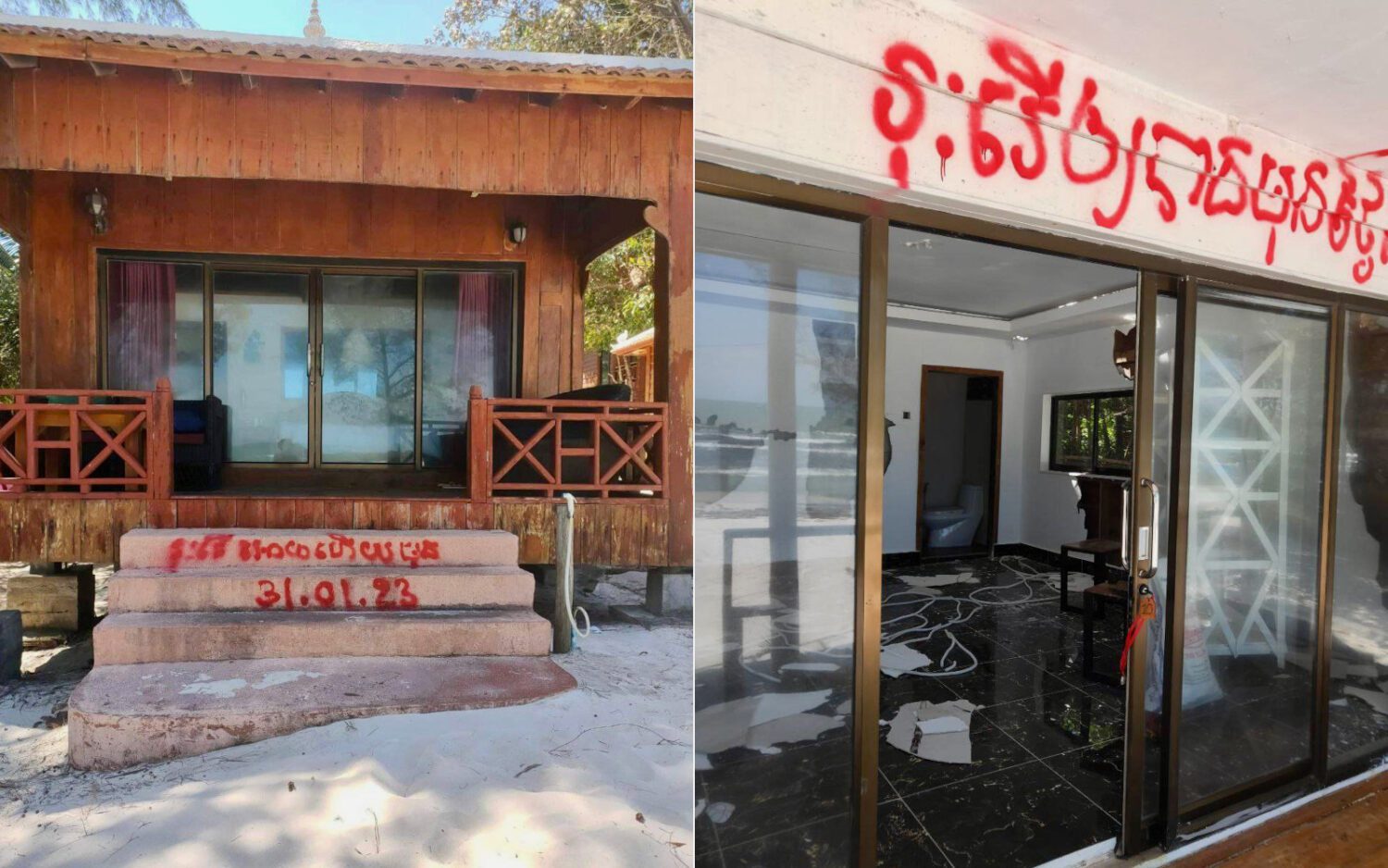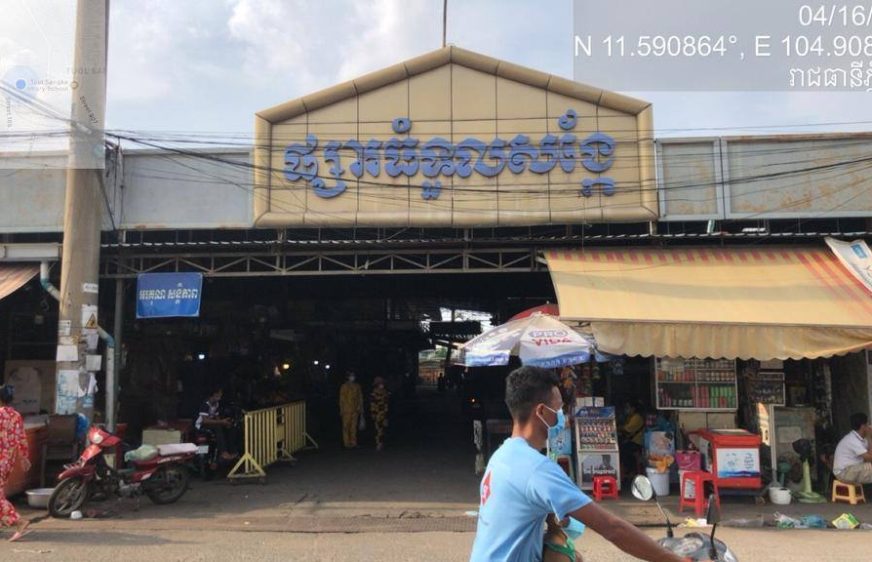The NagaWorld workers’ strike began December 18, 2021, over alleged union-busting at the well-connected casino. To commemorate the strike’s one-year anniversary, this VOD project examines the deterioration of workers’ rights — with case studies in sanitation, hotels and garment factories — as labor movements in Cambodia have been trampled with violence, obstruction and imprisonment.
A year ago, the NagaWorld protests were almost a festival, a spirited crowd gathered in tidy rows. They chanted from morning till evening, and confronted swarms of armed officers with cheers and applause.
That was before they experienced violence, imprisonment, court questioning, and concerted obstruction from company, city and government.
The protesters rallied at the time in their work uniforms — many in the red blazers of the casino floor, others in the varying costumes of hotel service spread across the multibillion-dollar NagaWorld complex. They organized in units, and took turns singing, dancing and leading shouts of solidarity.
Not all of the casino union’s 2,500 members demonstrated. More than 1,100 unionists had been fired in layoffs targeting labor leaders, and most hadn’t worked or seen each other through long Covid-19 closures. But the early rallies in central Phnom Penh still numbered easily in the hundreds — one demonstration attracted an estimated 1,000 participants — despite official opposition.
A year after those initial days, the protests are staggering along: A core group of 100 or so unionists, donning orange jumpsuits, are calling for the release of their jailed union president.
“I didn’t think it would go on this long,” said Som Chanlakkhena, 37, who worked at NagaWorld for 12 years as a dealer. “My life is changed. … I’ve experienced many things. Thank you Naga for showing us the injustice of society.”
She and her colleagues aren’t alone in their grievances or resolve. The year of NagaWorld protests has seen Cambodian labor movements likewise trampled in factories, tourism and municipal services.
Rising Suppression
The NagaWorld strike began on Saturday, December 18, 2021, alleging union-busting amid mass layoffs at the well-connected casino. City officials pulled up to the protesters and branded them as criminals: Armed with a municipal court order, they told the crowd over a sound system that their strike was illegal and warned active employees about serious misconduct. The workers cheered in response. In the afternoon, Phnom Penh governor Khuong Sreng declared that the rally violated Covid-19 measures.
Over the next weeks and months, the rallies persisted — every day at first — even as pressure mounted on the workers:
- December 19, 2021
By day two, authorities blocked roads around the Phnom Penh casino to prevent protesters from getting near NagaWorld. Labor Ministry spokesman Heng Sour wrote on Facebook that the protesters were using “color revolution” tactics by bringing pregnant workers to rallies — allegedly to see them injured and make authorities look bad. His rhetoric implied foreign meddling and mirrored language the government has used to justify charges of treason. - December 31, 2021
Riot police stormed a late night workers’ rally on New Year’s Eve, blocking protesters from leaving. More than 100 military police officers with riot shields and truncheons arrived on military trucks, some carrying assault rifles. Nine unionists were arrested from union offices and other locations, while protesters huddled together to prevent further arrests. Workers recalled the night as a major turning point — realizing they were up against not only their casino employers but a larger state apparatus. - January 4, 2022
Four days later, NagaWorld union president Chhim Sithar, who was in hiding, tried to join the daily demonstration but was grabbed by police officers and pulled into a car. She was charged with incitement to disturb social security.
The protests continued daily through January, even as the rallies were pushed farther away from NagaWorld behind police barricades.
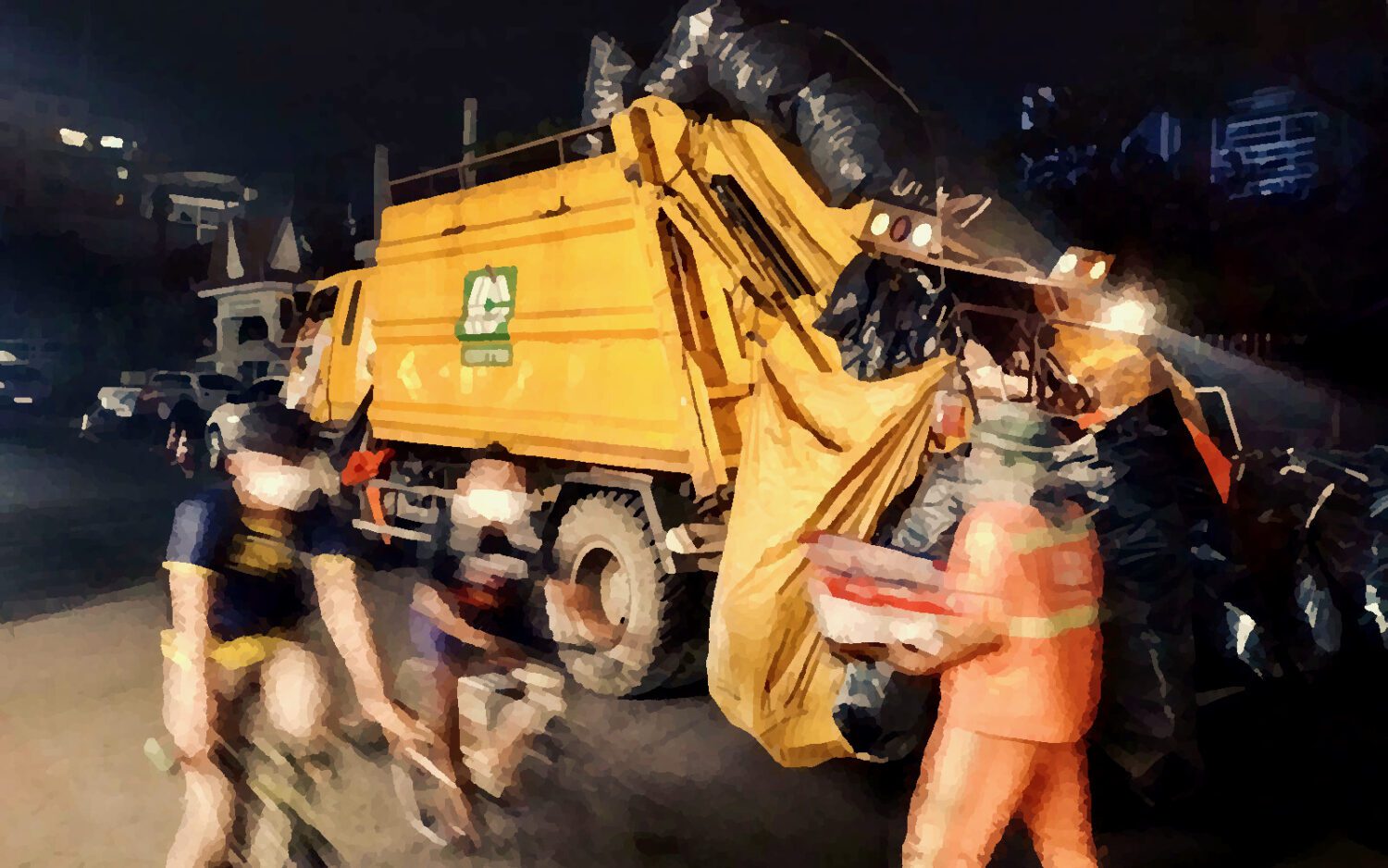
After Union Dissolution, Phnom Penh Garbage Workers Toil in ‘Panic’
Sanitation workers say they never got the employment and benefits promised to them when they went on strike in 2020. Their union has since been crushed, with at least one trash company admitting it will not hire unionists.
By Tran Techseng and Fiona Kelliher
On Friday, February 4, health authorities joined the NagaWorld fray. Clad in light blue plastic, health officers prevented around 350 protesters from leaving unless they were tested for Covid-19. Police made more arrests, and health officials ordered all workers to isolate for seven days.
The workers obliged, but when they later returned to protest, authorities forced them onto buses and took them to a quarantine center. This was a pattern that repeated for months: Protesters were rounded up near NagaWorld and bused to the city’s outskirts, and sometimes held temporarily at the facility.
Authorities shoved and dragged protesters, and were accused of sexual harassment. City Hall blamed the protesters, saying they were acting and their behavior was “not suitable as Khmer women.”

Tourism Workers See Parallels Between NagaWorld, Their Own Disputes
Even as tourism to Cambodia recovers, unionists in the sector who were suspended during Covid-19 say they are kept out of the workforce, drawing parallels to the NagaWorld strife.
By Ouch Sony
Vann Rina, 37, said that as the months dragged on, she told herself the NagaWorld dispute wouldn’t stretch beyond six months. When the six-month mark passed, she told herself it wouldn’t last more than 100 additional days. Now, she doesn’t want to count the days anymore.
The year has opened her eyes to society, said Rina, who worked for 16 years as an assistant to the manager of table gambling. She said the authorities’ near-daily force against workers, the arrest of her colleagues, and the New Year’s Eve riot police stood out to her.
“I will participate more in social issues, and I feel like trying to fit in isn’t what’s important anymore,” Rina said. “The important thing is rights and freedom.”
Some family members support her — especially financially — but others, as well as neighbors, ask her to stop protesting, she said. Rina tells them they don’t need to participate, but just pray for her to be safe.
Rina added that she had no intention of stopping. She had job opportunities elsewhere, but still wanted to return to work at NagaWorld and advocate for workers’ rights there.
“I want to go back to work because I want to help the workers there. If we aren’t there, how many workers will face problems? I want this company to respect the union and accept the union,” she said. “Whoever tells me to walk away, I won’t.”
In March, union president Sithar was released on bail after agreeing to suspend the strike. But the protesters simply continued, defying their leaders’ request. She was re-elected union president anyway two months later after saying she had misunderstood the workers’ feelings.
However, the renewal of the union’s registration is in limbo after the Labor Ministry refused to accept their application, said union vice president Chhim Sokhom.
The ministry told the union that fired workers should not be included in its membership list, but those workers were still trying to get their jobs back, Sokhom said.
“This reason can’t be accepted [by us],” she said.
The Labor Ministry and NagaCorp have not responded this week to a series of questions.
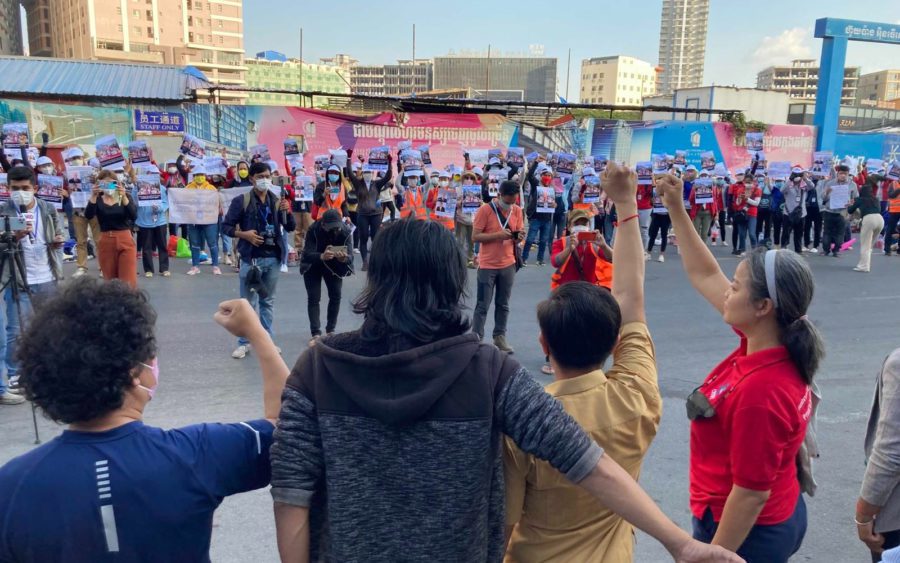
Union Registration Process Rife With Obstacles
In the past 14 months, at least seven factory-level unions have reported obstacles in registering new unions.
By Keat Soriththeavy and Ananth Baliga
At the one-year mark of protests, the number of workers still contesting their layoffs has fallen to around 120.
NagaWorld union president Sithar is back in jail after traveling abroad for a labor conference without knowing that going overseas was against her bail conditions. Nine protesters are undergoing court questioning over a NagaCorp complaint about alleged trespassing and intentional damage, in a case whose specifics remain unclear. Another court proceeding is underway to issue a verdict on the labor dispute itself.
For Chanlakkhena, the 37-year-old former dealer, the problem is still too important to give up on. She said her 16-year-old daughter agrees too, and they live off savings and by reducing spending.
“My daughter and I are willing to eat just salt and prahok. Once we are successful, the next generation won’t suffer like us again.”


